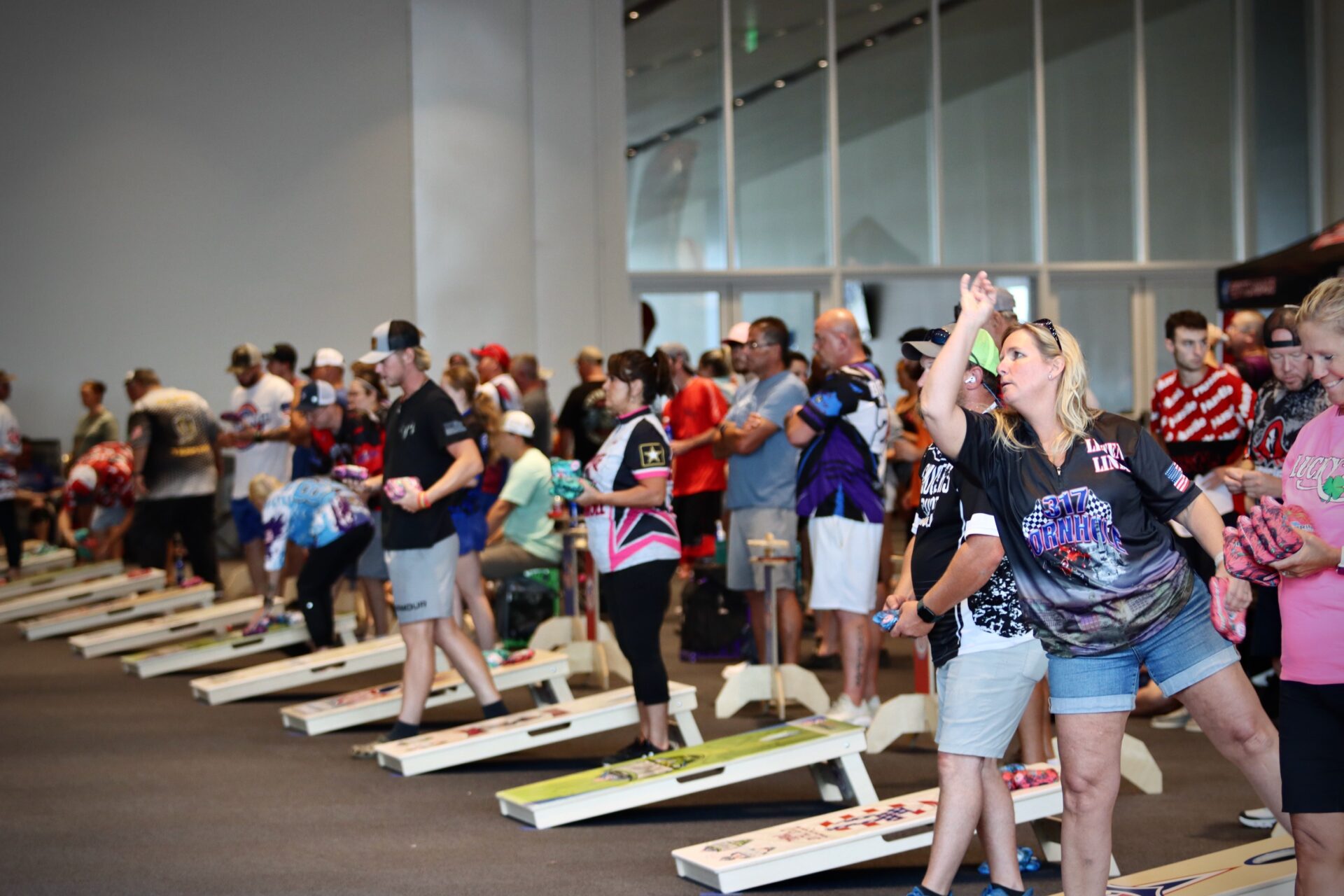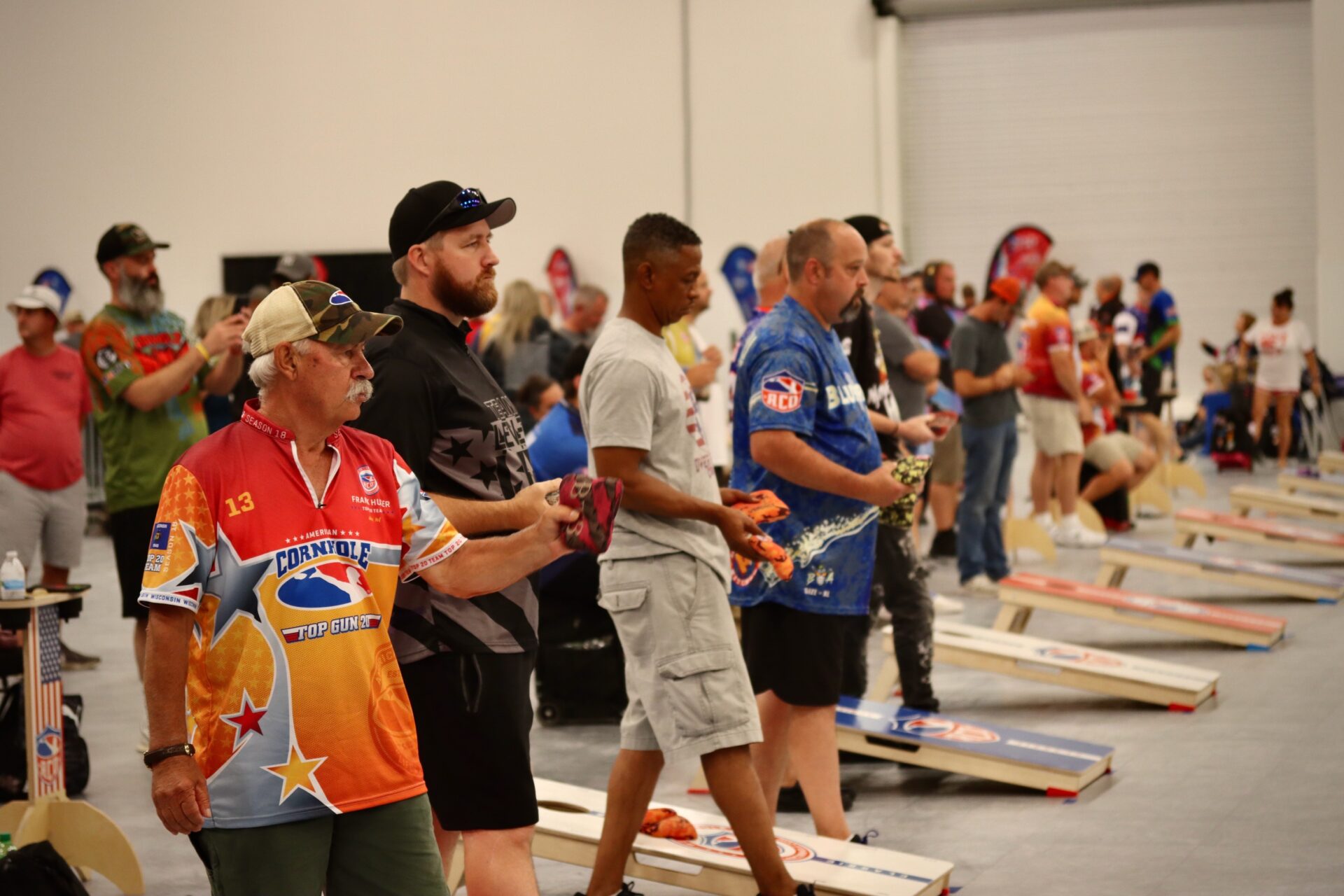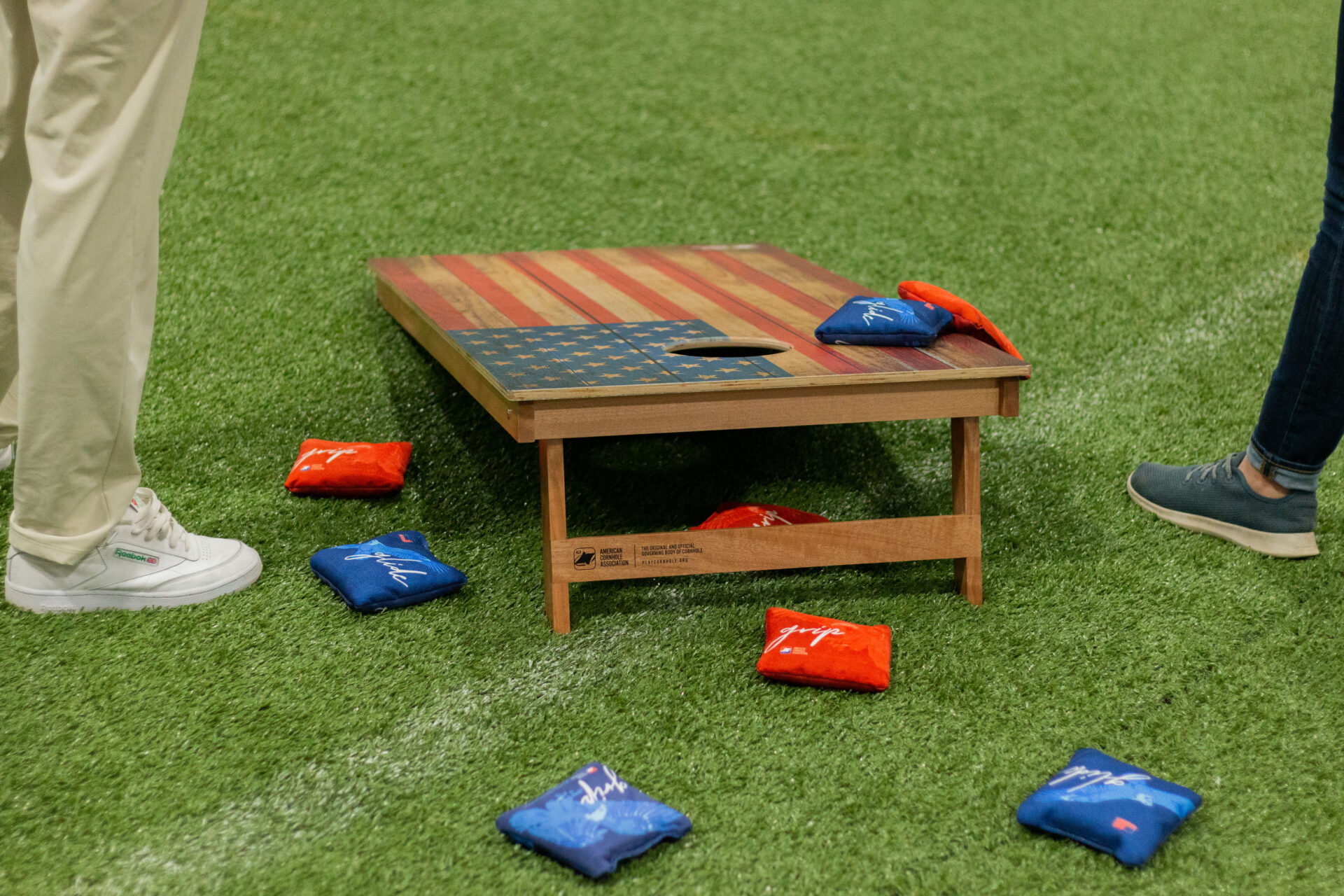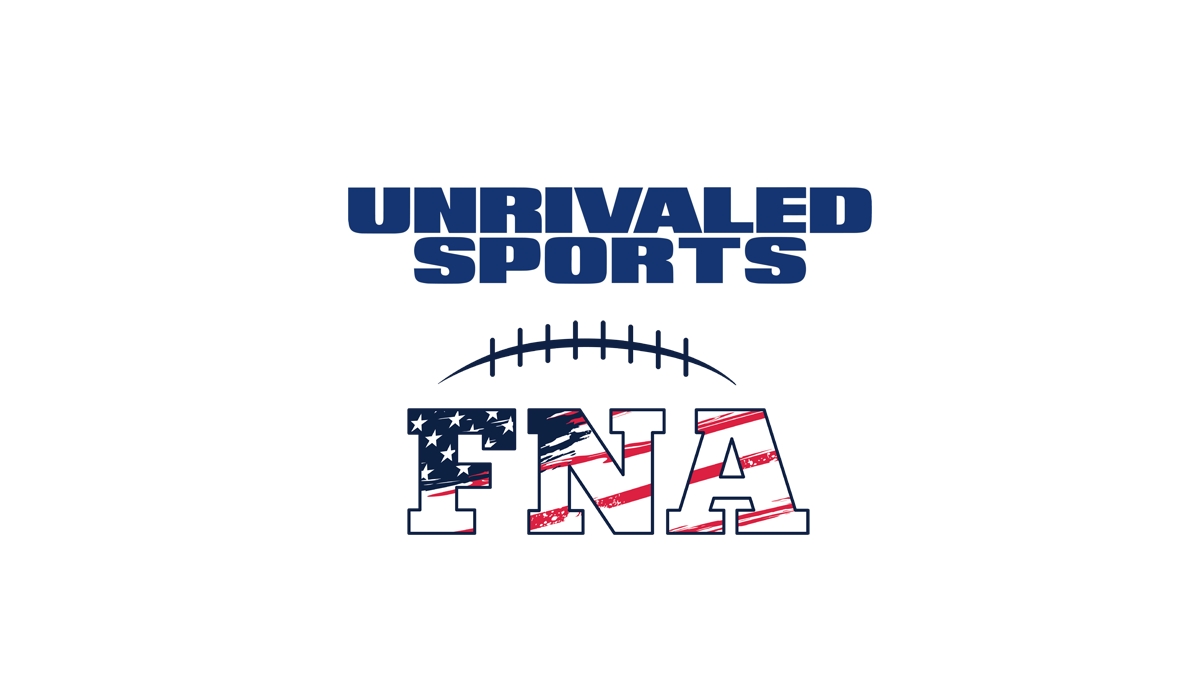
As far as games go, they don’t get much simpler than cornhole, at least on the surface. Known as “bags” or “tailgate toss” in some parts of the country, cornhole is the game where players try to score points by throwing square beanbags into a hole on a sloped board. You’d be hard-pressed to find someone who hasn’t played, or at least heard of, cornhole, and it’s been growing in popularity year over year. According to Frank Geers, founder of the American Cornhole Organization (ACO), roughly 50 million people in the U.S. are familiar with the game, 10 to 15 million have played it, and tens of thousands play it competitively. Known as “The Cornhole Dude,” Geers has dedicated much of his adult life to legitimizing cornhole and bringing it to the masses. He founded the ACO 20 years ago and has been organizing and hosting tournaments across the U.S., Canada, and recently the U.K., for 18 years. This year, the ACO is hosting 42 tournaments across the country on its Majors tour, with the World Championships taking place in Tulsa, Oklahoma, on the last weekend of July.
As a former marketer, Geers says he initially became interested in cornhole from a marketing perspective, as the bags and boards are ripe for branding. However, he began to see greater potential in transforming the game into a competitive sport with official rules and regulations. He explains that part of the reason for cornhole’s popularity is its accessibility. “It is a very simple game to play, whether you’re eight or 80,” Geers says. As well, its appeal transcends gender and age, Geers says, adding that the ACO’s 5,800-strong membership comprises roughly 60 percent men and 40 percent women. His sentiment is echoed by Josh Brown, the marketing director for the American Cornhole Association (ACA), who says that cornhole experienced tremendous growth during the COVID years because it was the perfect game to play during social distancing. Brown also highlights its inclusivity and accessibility adding that the ACA has partnered with the Special Olympics to develop and promote cornhole within the programs included in the North America Region. He says that cornhole is going to be one of the sports at the 2026 running of the Special Olympics Summer Games in Medicine Hat, Alberta. As they’re both such strong advocates for cornhole, we asked Geers and Brown for tips on how to host a top-notch tournament. Here’s what they advise.

Book the right venue
One of the great things about cornhole is that it can be set up in so many different scenarios, Geers says. It can be played either indoors or outdoors, as long as you have a suitable amount of space. According to official rules, the boards must be 27 feet apart, so Geers recommends an eight-foot by 40-foot space to set up one court system. Additionally, it’s important to have a bit of room on each side to prevent players from bumping into each other, Brown says. “We’ve seen some tournaments where they’re trying to jam people into a beer hall, and it just doesn’t necessarily give the best experience to players.”
Cornhole’s flexibility and versatility are a bonus for planners because it’s a game that can be set up as a standalone tournament or as an add-on to an already existing event. So, say you’re planning a big soccer or football tournament and looking for something to occupy athletes or families between matches. Cornhole fills the bill perfectly. “It’s a game that can be set up on the fly anywhere,” Geers says. “If you’ve got a soccer event going on, it’s really difficult to set up a pickleball tournament right next to you, but it’s very easy to set up a cornhole tournament.” Brown also adds that cornhole is an easy sport to generate extra income if that’s the goal, not just through entry fees, but through business relationships. “The side income piece is somewhat important, but cornhole is also a really good avenue for sponsorships because the boards themselves are just perfect for throwing on a logo of a sponsor and then those boards make great gifts to give back to the sponsor after the tournament is done,” he says.
There are a few more factors to keep in mind when deciding whether to host your event indoors or outdoors, Brown notes. “With indoor, you will have to deal with ceiling height, but you don’t have to deal with weather so it’s a little bit more predictable,” he says. “I think the vibes are a lot better outdoors, but wind or rain can really play a factor.” Regardless of whether you set up indoors or outdoors, though, make sure players can either bring their own or buy food and drinks. “I think having adequate access to food and beverages always helps,” Brown says. “Cornhole and drinking beer and having fun goes hand in hand.”

Get the right gear
Both Geers and Brown emphasize the importance of using official, high-quality boards and bags. Originally played with bags filled with dried corn kernels, which is where the game got its name, cornhole is now played with bags filled with plastic resin pellets. That development was a game-changer, says Frank Geers, who notes that he came up with the idea to use resin pellets due to a problem one of the ACO’s clients was facing. “Carnival Cruise Line started using our boards and bags on their boats,” Geers says. “They discovered that the bags were mildewing, and that rodents and bugs were eating the bags, so I had to devise a better bag for them. So, I came up with the concept of putting plastic resin in them. That was something that we invented for the sport to make it better, because the bags no longer break down.” Additionally, Geers was responsible for another development that changed the game: using different textiles on each side of the bag. “Some 20 years ago, my uncle was making the bags in his upholstery shop. I was there looking through a swatch book, and I asked him if we could blend two fabrics together,” Geers says. “My thought was to add complexity to the game by having a side of the bag that would be slower than the other side, so you’d have a stick side and a slick side, and now the rest is kind of history.” Nowadays, two-sided bags are essentially industry standard, especially in competitive cornhole, because they provide players with more variety in the types of shots they can take, including the blocker shot, the slide shot, the airmail shot and the push shot. Recently, the bags have made even more creative shots possible, such as the cut shot, the roll shot, the flop shot, and even the bar-of-soap shot. Bag size is also now standardized, with some tolerances on weight: Regulation-size bags measure six by six inches and weigh between 14 and 16 ounces.
Meanwhile, the boards have also been standardized for competitive play. Regulation-size boards measure two feet by four feet, and the hole must be six inches wide. Brown says that the material of the board also matters. “You want to play on a board made of wood, and that top thickness needs to be at least 1/2 an inch thick,” he says. “There are plastic cornhole boards out there that you can get off Amazon but they just don’t play the same way.”

Use the right tools
One of the most challenging aspects of running a cornhole tournament is creating the brackets and keeping track of players and scores. Both Brown and Geers recommend Scoreholio, a tournament management software designed to streamline the organization and operation of cornhole leagues and tournaments. Its features include player check-in via smartphone scanning, interactive scoreboards, real-time updates, and live streaming integration. “A common tournament style for cornhole is called a blind draw, where you don’t get to pick your partner,” Brown says. “The Scoreholio software will create random teams, determine who’s playing against each other, what boards they’re playing on, and so on
and so forth.”
Regarding the tournament format, while doubles play is much more common, cornhole can also be played one-on-one. Indeed, at its World Championships, the ACO crowns a King or Queen of Cornhole based on individual standings. Whatever tournament format you choose, says Josh Brown, just ensure you give yourself enough time to manage it, as things always take longer than you expect. “Even if you have just 10 teams playing a double elimination tournament, where you’re trying to get people to at least play two games, that’s probably going to take three to four hours to get to a final crowning of a champion.” Set aside enough time and have the right venue, gear and tools in place, though, and you’re pretty much guaranteed to create a cornhole tournament that’s a winner.

Who to Call
American Cornhole Association (ACA)
Founded in 2003, the ACA positions itself as “The Original and Official Governing Body of Cornhole.” While it helps set up some tournaments, it’s primarily focused on making and selling gear, as well as partnering with other organizations to promote the sport. Learn more at playcornhole.org
American Cornhole League (ACL)
Founded in 2015, the ACL’s tagline is “Anyone Can Play, Anyone Can Win.” It hosts professional cornhole tournaments and events throughout the year, including the ACL Pro Tour and the ACL World Championships. Some of its games are shown on ESPN. Learn more at iplaycornhole.com
American Cornhole Organization (ACO)
The ACO was established in 2005 and is headquartered in Camp Dennison, Ohio. Billing itself as the “First and Official Governing Body for the Sport of Cornhole,” the ACO runs a series of tournaments nationwide, including the World Championship of Cornhole. Its website also offers official cornhole rules, certified products, and comprehensive information about cornhole events. Learn more at americancornhole.com









